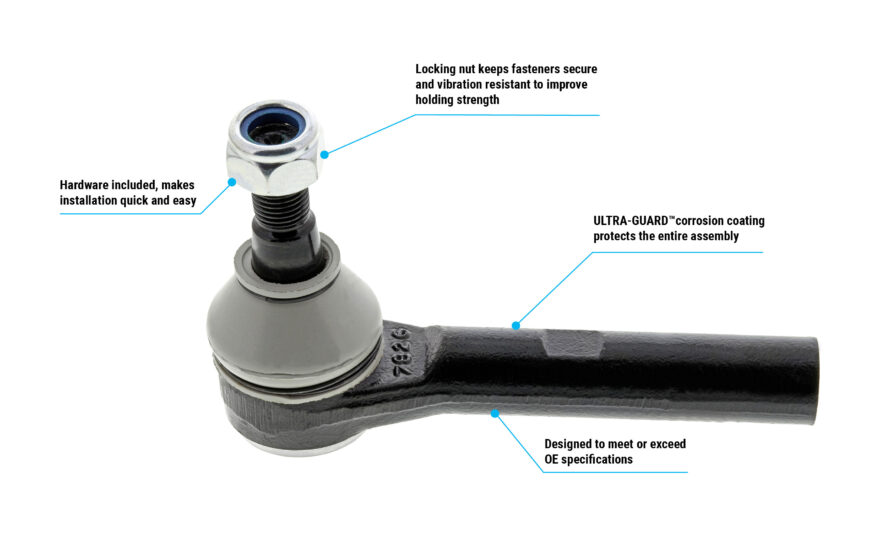Are Outer Tie Rods The Same On Both Sides

Outer tie rods are a crucial component of your vehicle's steering system, directly responsible for translating the rotational movement of the steering wheel into the linear movement that turns your wheels. But a question that often pops up, especially when ordering replacement parts, is: Are outer tie rods the same on both sides of the car? The short answer is: sometimes, but not always. Understanding the nuances is key to ensuring proper steering geometry and safe operation.
Universal vs. Side-Specific Tie Rods
Many vehicles, particularly those with symmetrical steering rack designs, utilize outer tie rods that are essentially interchangeable between the driver's side and passenger's side. This simplifies manufacturing, warehousing, and replacement. However, there are numerous instances where the outer tie rods are side-specific. This can be due to a variety of factors:
- Length Variations: The most common difference is length. Due to the positioning of the steering rack, control arms, and other suspension components, one side may require a slightly longer or shorter tie rod to achieve proper alignment. Even a small difference in length can significantly impact steering feel and tire wear.
- Thread Direction: While less common, some manufacturers utilize tie rods with different thread directions (left-hand vs. right-hand threads) to simplify adjustment or prevent loosening during operation. Mismatched thread directions can make installation impossible or lead to premature failure.
- Angle of the Ball Joint: The ball joint on the outer tie rod connects to the steering knuckle. The angle at which this ball joint is oriented can differ between the driver's and passenger's sides to accommodate variations in suspension geometry.
- Integrated Features: Some tie rods might incorporate features like vibration dampers or specific mounting points for ABS sensors or other accessories. These features can be side-specific depending on the vehicle's design.
Identifying Side-Specific Tie Rods
The most reliable way to determine if your vehicle uses side-specific outer tie rods is to consult the vehicle's repair manual or parts catalog. These resources will typically list the specific part numbers for the left and right sides. Alternatively, you can use online parts retailers, carefully entering your vehicle's year, make, and model to ensure compatibility. Pay close attention to any notes indicating “left” or “right” side application.
Visually inspecting the old tie rods before removal can also offer clues. Compare the length, thread direction (if visible), and the angle of the ball joint. However, visual inspection alone is not a foolproof method, especially if the old tie rods are damaged or worn.
Consequences of Using the Wrong Tie Rod
Installing an incorrect outer tie rod can have serious consequences:
- Misalignment: Incorrect length will throw off the wheel alignment, leading to uneven tire wear, poor handling, and potentially dangerous steering instability.
- Binding and Damage: An incorrectly angled ball joint can bind or overextend, leading to premature wear or even failure of the tie rod or other suspension components.
- Safety Hazard: In extreme cases, an incompatible tie rod could separate from the steering knuckle, resulting in a complete loss of steering control.
Installation and Maintenance Tips
When replacing outer tie rods, always follow these guidelines:
- Use Quality Parts: Invest in reputable brands known for their durability and precision. Cheap aftermarket parts can compromise safety and performance. Brands like Moog, Mevotech, and TRW are generally well-regarded.
- Measure Before Removal: Before removing the old tie rod, measure the distance from the tie rod end to a fixed point on the inner tie rod or steering rack. This measurement will help you install the new tie rod to approximately the same length, minimizing the severity of misalignment before taking it to an alignment shop.
- Professional Alignment: After replacing any steering or suspension component, it's essential to have a professional wheel alignment performed. This ensures that all the angles are within the factory specifications, optimizing handling, tire wear, and fuel efficiency.
- Torque Specifications: Always tighten the tie rod end nuts to the manufacturer's specified torque. Over-tightening can damage the threads, while under-tightening can lead to loosening and failure.
Replacing outer tie rods is a relatively straightforward repair, but attention to detail is crucial. Understanding whether your vehicle uses universal or side-specific tie rods is the first step towards a successful and safe repair. Don't gamble with your steering; always prioritize using the correct parts and having a professional alignment performed.
